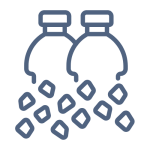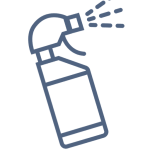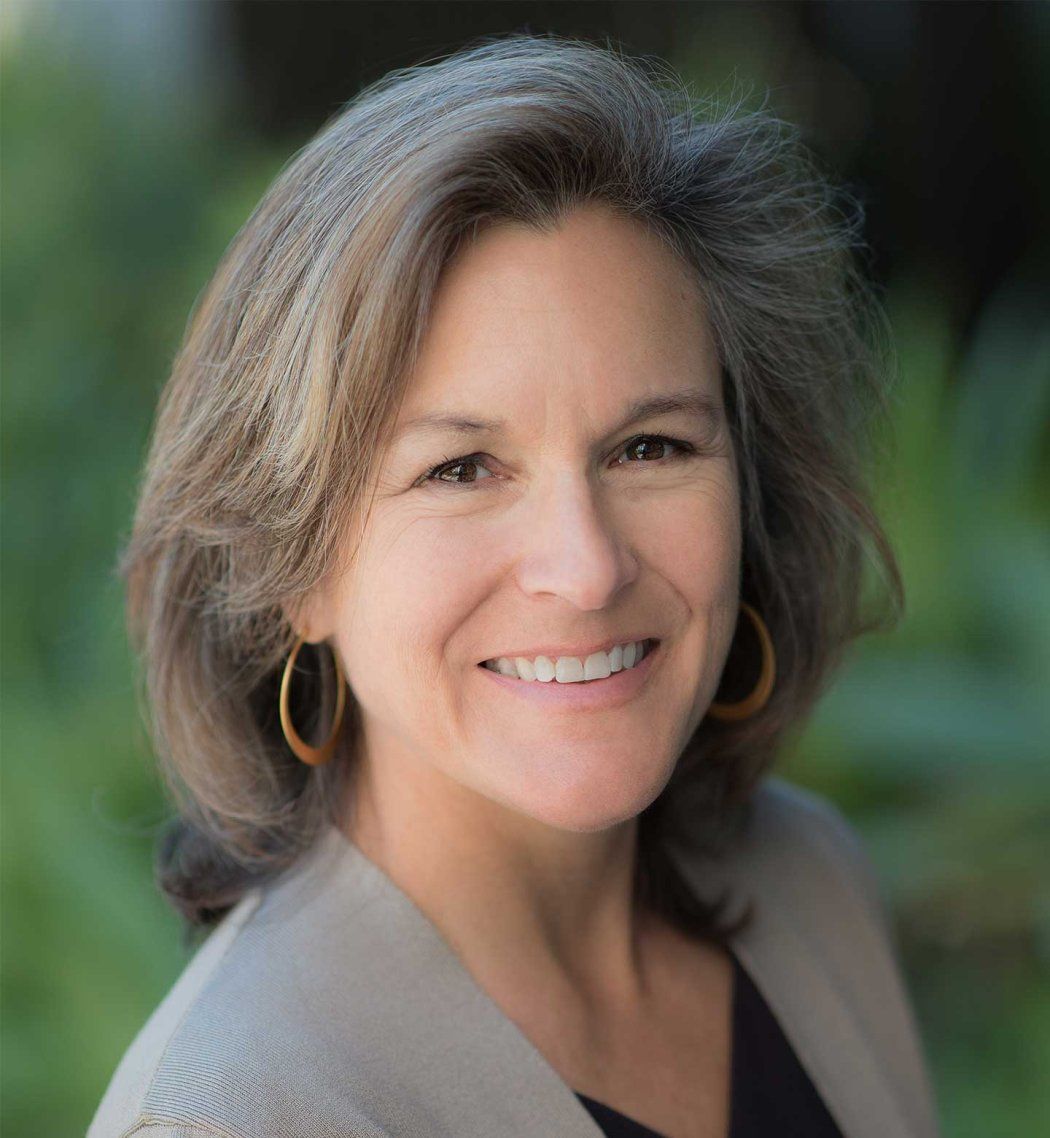An invisible invasion by land, air and sea: Microscopic plastic pieces are in the food we eat, the air we breathe and the water we drink – bottled or not.
For more than three decades, UC San Francisco Professor of Obstetrics and Gynecology and Reproductive Sciences Tracey Woodruff, PhD, MPH, has researched how the toxic chemicals that surround us in modern life make us sick, like those in microplastics. Sometimes only about the width of a human hair, microplastics are the insidious byproduct of everyday items like packing materials, car tires, synthetic clothes as they degrade and even some scrubbing face washes.
Woodruff and University of California colleagues reviewed nearly 2,000 scientific studies about microplastics’ health risks in 2022 at the request of California legislators seeking advice for future policies. The available evidence from animal studies led them to warn that ingested microplastics appear to reduce fertility and may increase the risk of cancer, particularly in the digestive tract.
Here’s how Woodruff’s research changed what she eats to what cleaning products she has under her sink – and how what she’s learned can help you, too.
What are microplastics made of?

It depends on where they come from. Since microplastics are typically from the breakdown of plastics, they can be made of chemicals that may be familiar to people – like BPA (bisphenol A), which used to be popular for use in baby bottles until a consumer boycott; or “forever chemicals” like phthalates that you might find in cosmetics or PFAS, perfluoroalkyl and polyfluoroalkyl substances, used in non-stick cookware and even dental floss. But there can also be chemicals in microplastics that we don’t really know that much about because the government doesn’t require that chemicals used in plastics and other materials be comprehensively tested for safety.
Why are microplastics bad for us?
Chemicals like BPA, phthalates and PFAS can mimic human hormones, the body’s chemical messengers controlling processes like reproduction, growth and metabolism. Exposure to these substances has been shown to increase the risk of everything from infertility to poorer fetal development and cancer.
How do you try to avoid microplastics and other toxins in your family’s food?
I don’t microwave in plastic. Years ago, I put my kids’ plastic baby bottles in the microwave to warm up milk because I, like so many people, just thought everything I bought at the store was safe for all uses. Now, because of my research, I would never do that. Heat makes plastic release harmful chemicals like BPA so I always microwave in ceramic or glass – that’s a really easy one. Still, it just goes to show that the burden shouldn’t be on me as the consumer to figure out if products can be toxic.
I have a glass water bottle to avoid buying plastic water bottles. Steel water bottles are also a good choice.
I buy organic as much as possible to reduce our exposure to pesticides. We live in the Bay Area, so it’s fortunate that we can shop at farmers’ markets but not everyone can. That just, again, shows we need to have ways to encourage that everyone has access to healthy food options.
I don’t eat a lot of red meat. Many chemicals like to hang out in fatty food, so reducing your red meat intake is also a good way to reduce chemical exposures. There’s an added climate benefit too because eating a more plant-based diet has a lower carbon footprint – and can lower your blood pressure and cholesterol.
At home, we try to eat lower on the food chain in general, more grains, fruits, vegetables, because many toxic chemicals tend to accumulate in animals higher up in the food chain as those animals eat other animals or plants.
Did you trash all of your plastic food containers?
No. We have a mix of plastic and glass, and we try to store in glass when possible. I’ve talked to people who got rid of all their non-stick pans in one day. For most of us, it’s more realistic to replace things over time.
And of course, if you have small kids, it’s pretty difficult to get rid of plastic because that’s what you use to prevent accidents.
What are some non-toxic cleaning tips?

At home, we use baking soda and water or vinegar and water to clean – those perform equally as well as products you’d buy on the market. A good recipe is one part vinegar to one part water – just don’t mix it with chemical cleaners, like bleach, which can create deadly chlorine gas.
If you still want to buy cleaning products, you can look for products designated by the Environmental Protection Agency through their Safer Choice program.
We also make sure that our vacuum has a HEPA filter to control dust.
How has your work influenced your community involvement?
I’ve learned that it’s really important to be engaged in holding the government accountable for these exposures because, for so many of them, you or I can’t do anything about them – only the government can regulate chemicals that make their way into our water, food and products we wear and put on our bodies. We should be able to go into a store and purchase an item and know that the government has made sure it’s safe for us and our families. The burden can’t be on consumers to navigate all of this.
That’s why I also register to vote – that’s the other thing I do consistently.
What are microplastics made of?
It depends on where they come from. Since microplastics are typically from the breakdown of plastics, they can be made of chemicals that may be familiar to people – like BPA (bisphenol A), which used to be popular for use in baby bottles until a consumer boycott; or “forever chemicals” like phthalates that you might find in cosmetics or PFAS, perfluoroalkyl and polyfluoroalkyl substances, used in non-stick cookware and even dental floss. But there can also be chemicals in microplastics that we don’t really know that much about because the government doesn’t require that chemicals used in plastics and other materials be comprehensively tested for safety.
Why are microplastics bad for us?
Chemicals like BPA, phthalates and PFAS can mimic human hormones, the body’s chemical messengers controlling processes like reproduction, growth and metabolism. Exposure to these substances has been shown to increase the risk of everything from infertility to poorer fetal development and cancer.
How do you try to avoid microplastics and other toxins in your family’s food?
I don’t microwave in plastic. Years ago, I put my kids’ plastic baby bottles in the microwave to warm up milk because I, like so many people, just thought everything I bought at the store was safe for all uses. Now, because of my research, I would never do that. Heat makes plastic release harmful chemicals like BPA so I always microwave in ceramic or glass – that’s a really easy one. Still, it just goes to show that the burden shouldn’t be on me as the consumer to figure out if products can be toxic.
I have a glass water bottle to avoid buying plastic water bottles. Steel water bottles are also a good choice.
I buy organic as much as possible to reduce our exposure to pesticides. We live in the Bay Area, so it’s fortunate that we can shop at farmers’ markets but not everyone can. That just, again, shows we need to have ways to encourage that everyone has access to healthy food options.
I don’t eat a lot of red meat. Many chemicals like to hang out in fatty food, so reducing your red meat intake is also a good way to reduce chemical exposures. There’s an added climate benefit too because eating a more plant-based diet has a lower carbon footprint – and can lower your blood pressure and cholesterol.
At home, we try to eat lower on the food chain in general, more grains, fruits, vegetables, because many toxic chemicals tend to accumulate in animals higher up in the food chain as those animals eat other animals or plants.
Get more tips to avoid household toxins from Woodruff and UCSF’s Program on Reproductive Health and the Environment.
Did you trash all of your plastic food containers?
No. We have a mix of plastic and glass, and we try to store in glass when possible. I’ve talked to people who got rid of all their non-stick pans in one day. For most of us, it’s more realistic to replace things over time.
And of course, if you have small kids, it’s pretty difficult to get rid of plastic because that’s what you use to prevent accidents.
What are some non-toxic cleaning tips?
At home, we use baking soda and water or vinegar and water to clean – those perform equally as well as products you’d buy on the market. A good recipe is one part vinegar to one part water – just don’t mix it with chemical cleaners, like bleach, which can create deadly chlorine gas.
If you still want to buy cleaning products, you can look for products designated by the Environmental Protection Agency through their Safer Choice program.
We also make sure that our vacuum has a HEPA filter to control dust.
How has your work influenced your community involvement?
I’ve learned that it’s really important to be engaged in holding the government accountable for these exposures because, for so many of them, you or I can’t do anything about them – only the government can regulate chemicals that make their way into our water, food and products we wear and put on our bodies. We should be able to go into a store and purchase an item and know that the government has made sure it’s safe for us and our families. The burden can’t be on consumers to navigate all of this.
That’s why I also register to vote – that’s the other thing I do consistently.
What do microplastics do to our bodies? What can we do to avoid them? Tracey Woodruff, PhD, MPH, is a UCSF scientist who has produced seminal research on how harmful chemicals and pollutants impact health, pregnancy, and child development. She answers some of the most searched questions on the internet about microplastics.
